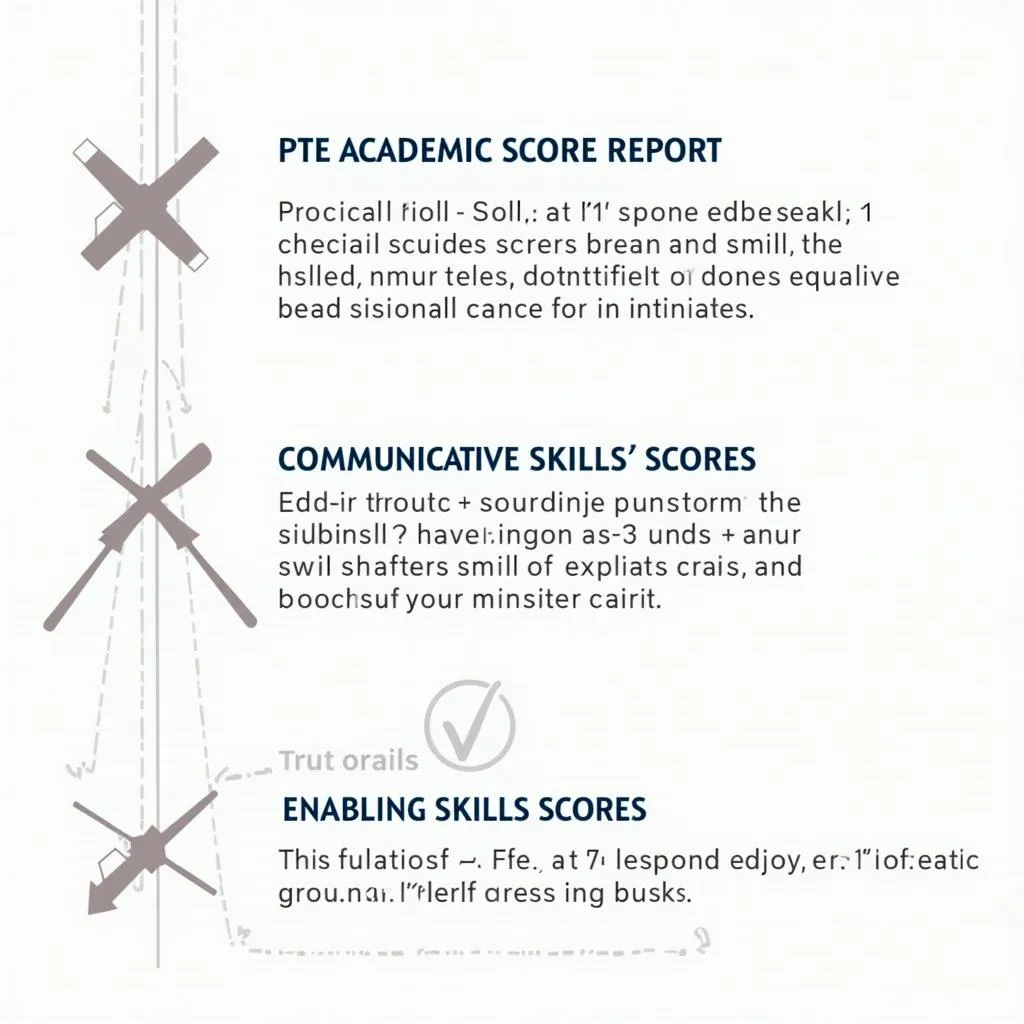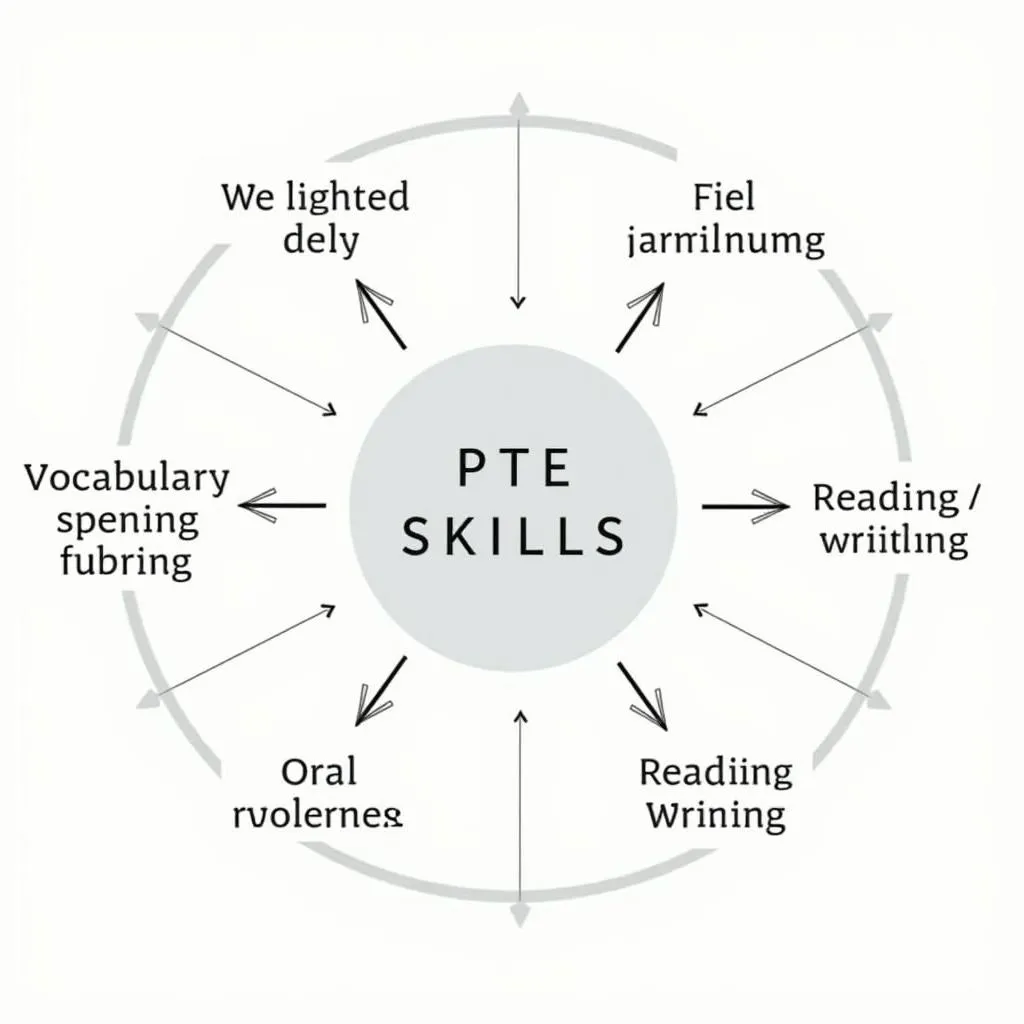Understanding your PTE Academic score report is crucial for evaluating your language proficiency and planning your next steps. This guide will walk you through the process of interpreting your PTE score report, helping you make sense of the numbers and their implications for your academic or professional journey.
The Basics of PTE Score Reports
PTE Academic scores are reported on a scale of 10-90, with 90 being the highest possible score. Your score report provides detailed information about your performance in various language skills and sub-skills. Let’s break down the key components:
Overall Score
This is the most prominent score on your report, representing your overall English language ability. It’s calculated based on your performance across all test items and is often the score required by institutions.
Communicative Skills Scores
These scores reflect your proficiency in four key areas:
- Listening
- Reading
- Speaking
- Writing
Each of these skills is scored independently on the same 10-90 scale as the overall score.
Enabling Skills Scores
PTE Academic also evaluates six enabling skills:
- Grammar
- Oral Fluency
- Pronunciation
- Spelling
- Vocabulary
- Written Discourse
These are scored on a scale of 10-90 and provide insights into specific areas of language use.
 Key components of a PTE score report
Key components of a PTE score report
How to Analyze Your PTE Score Report
To get the most out of your score report, follow these steps:
-
Start with the overall score: This gives you a general idea of your English proficiency level.
-
Examine communicative skills scores: Identify your strengths and weaknesses in listening, reading, speaking, and writing.
-
Analyze enabling skills scores: These pinpoint specific areas for improvement, such as grammar or pronunciation.
-
Compare your scores to institutional requirements: Check if your scores meet the criteria for your target institutions or employers.
-
Look for patterns: Identify any consistent high or low scores across related skills.
-
Consider the score descriptors: PTE provides descriptions for each score range to help you understand what your scores mean in practical terms.
Understanding Score Correlations
It’s important to note that certain skills in PTE are interconnected. For example:
- A high score in oral fluency often correlates with a good pronunciation score.
- Strong vocabulary skills typically support better performance in reading and writing.
Understanding these relationships can help you develop a more effective study plan.
 Correlations between PTE skills scores
Correlations between PTE skills scores
Interpreting Your Scores in Context
When interpreting your PTE score report, consider the following:
- Your target score: How do your actual scores compare to what you need?
- Score validity: PTE scores are valid for two years from the test date.
- Score consistency: If you’ve taken the test multiple times, look for trends in your scores.
- Specific institutional requirements: Some institutions may have minimum scores for certain skills.
Dr. Emma Thompson, a language assessment expert, advises: “Don’t just focus on the overall score. Pay close attention to the individual skill scores, as they provide valuable insights into your language proficiency profile.”
Using Your Score Report for Improvement
Your PTE score report is not just a set of numbers; it’s a roadmap for improvement. Here’s how to use it effectively:
- Identify your lowest scores: These are your priority areas for improvement.
- Set realistic goals: Aim to improve your scores incrementally.
- Create a targeted study plan: Focus on exercises that address your weak areas.
- Utilize practice resources: Engage in activities that mimic the PTE test format.
- Reassess regularly: Consider retaking the test after a period of focused study to track your progress.
Remember, improving your English skills takes time and consistent effort. Use your score report as a guide, but don’t be discouraged by initial results.
Common Questions About PTE Score Reports
How long are PTE scores valid?
PTE Academic scores are valid for two years from the test date.
Can I combine scores from different test attempts?
No, PTE does not allow score combining. Each test attempt produces an independent set of scores.
What if my scores are below the required threshold?
If your scores don’t meet your target, focus on improving your weakest areas and consider retaking the test after thorough preparation.
How do PTE scores compare to other English tests?
PTE provides score comparison tables with tests like IELTS and TOEFL, but it’s best to check with your specific institution for their equivalency policies.
Can I request a rescore?
PTE offers a rescoring service for speaking and writing sections, but it’s important to note that scores can go up or down after rescoring.
In conclusion, interpreting your PTE score report is a critical step in your English language journey. By understanding each component of the report and how to analyze it, you can gain valuable insights into your language abilities and create an effective plan for improvement. Remember, your PTE score report is not just a reflection of your current skills, but a tool to help you achieve your language goals. Use it wisely, and let it guide you towards success in your academic or professional endeavors.